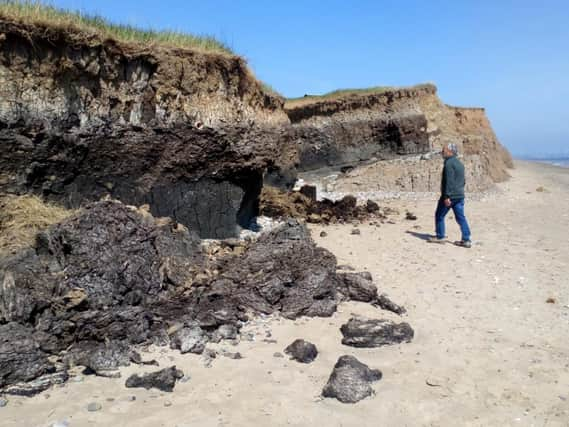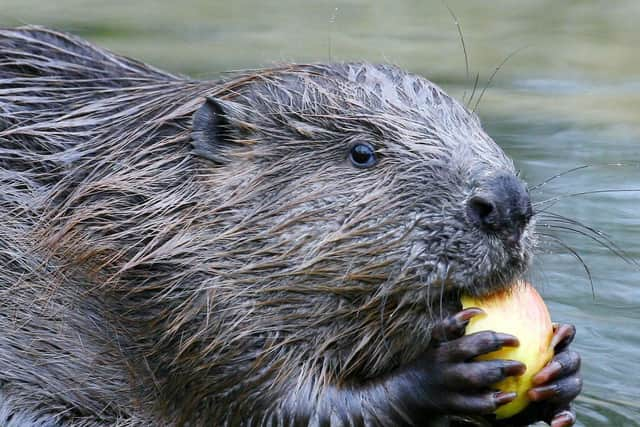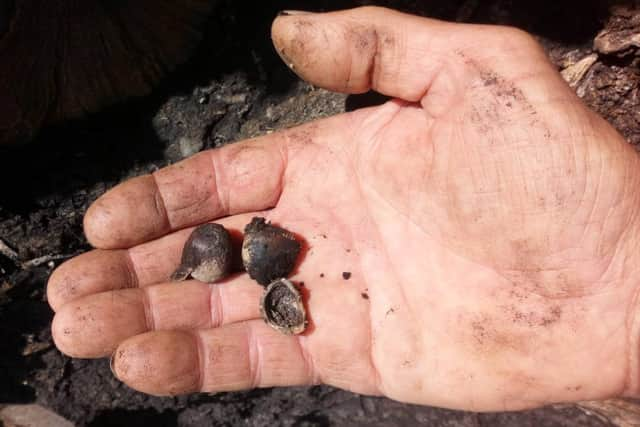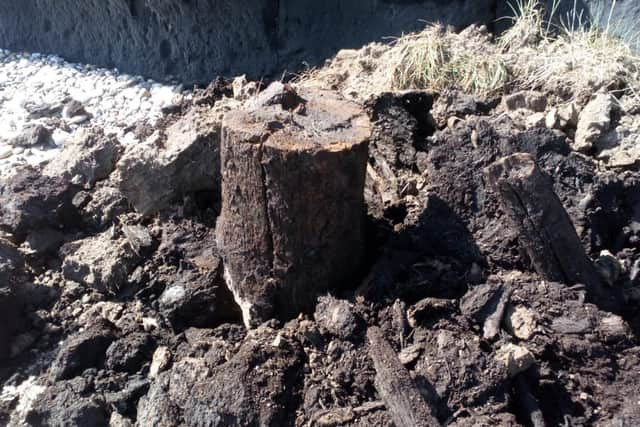Bronze Age beaver fur revealed by coastal erosion in cliffs in Yorkshire


After a walk across a field the path descends to the beach via a gap to an area called Skipsea Withow.
For years Skipsea Withow has attracted archaeologists and geologists as more of what was once part of an ancient mere or shallow lake has become exposed by coastal erosion.
Advertisement
Hide AdAdvertisement
Hide AdNumerous timbers can be seen studded into the cliff face and remarkably well-preserved chunks of wood fall out of peat deposits onto the sand, as the sea continues to make inroads.


A dig in 1993 by the Central Archaeological Service revealed ash timbers with gnawmarks which were believed to have been part of a beaver dam,
Beavers vanished from Yorkshire in the 16th century, hunted to extinction by the early 1500s for their fur, meat and scent glands.
A breeding pair was only recently reintroduced to Cropton Forest, near Pickering, by Forestry England.
Advertisement
Hide AdAdvertisement
Hide AdThree years ago local historian Sheila Cadman made an amazing discovery after taking a walk on the beach - and coming across a football-sized clump of fur sticking out of the cliffs.


"When I saw the hair I wasn't sure what animal it was from," said Sheila, who in 2013 had discovered bones of two Mesolithic (10,000BC to 8,000BC) deer on clay that would have once been the bottom of the lake.
"It could have been anything, a horse, from cattle or a dog. It was very black and very soft.
"The tide was coming in so I just got it out with my hands and put it in a polythene bag and bought it home
Advertisement
Hide AdAdvertisement
Hide Ad"The following day I returned and measured the distance from the base of the peat to where I was able to extract the hair and it was 2ft 6ins. It was obvious that it was ancient."


She gave some to experts at Hull University and Sheffield University and later learned that it had been analysed and found to be Bronze Age beaver fur - meaning it dated from around 2500BC until 800 BC.
She said: "Who'd have thought you would find something like that? It's just amazing really."
Meres were at one time common throughout Holderness - the only remaining mere now is at Hornsea.
Advertisement
Hide AdAdvertisement
Hide AdSkipsea Withow Mere was one of three ancient meres at Skipsea. One of them provided a natural moat for a Norman motte and bailey castle at Skipsea Brough, which in 2016 was revealed to have even earlier Iron Age foundations.


The name of the East Yorkshire market town of Beverley is believed to derive from the Anglo-Saxon "Beoferlic" - which later became "Beaverlac" which means "beaver clearing in the wood" or "beaver lake".
Industrious beavers are excellent aquatic engineers and use branches from trees they have felled to dam lakes and create moat-like ponds of water.
When The Yorkshire Post visited their new home in Cropton Forest earlier this year their impact on the environment was clear to see.
Advertisement
Hide AdAdvertisement
Hide AdThey have built a 5ft dam on the beck which has both slowed down the flow of water and diverted it back into its natural floodplain.
And they have also patched up a leak in the upper pond which has allowed it to fill again, and dug a 100-metre "canal" linking the two pools.